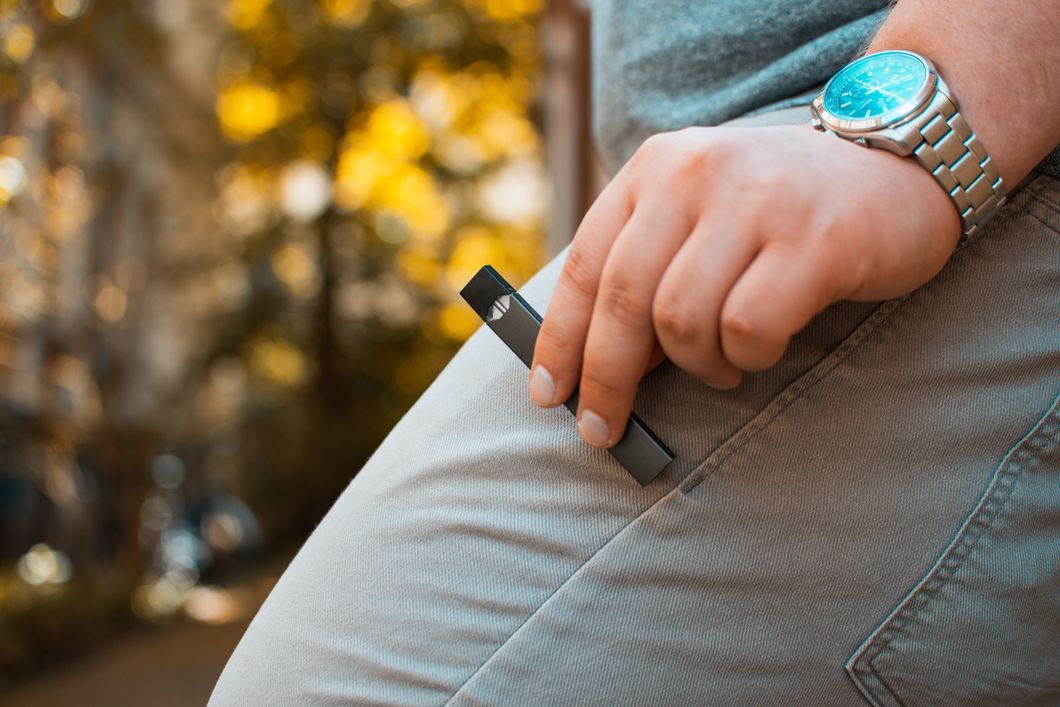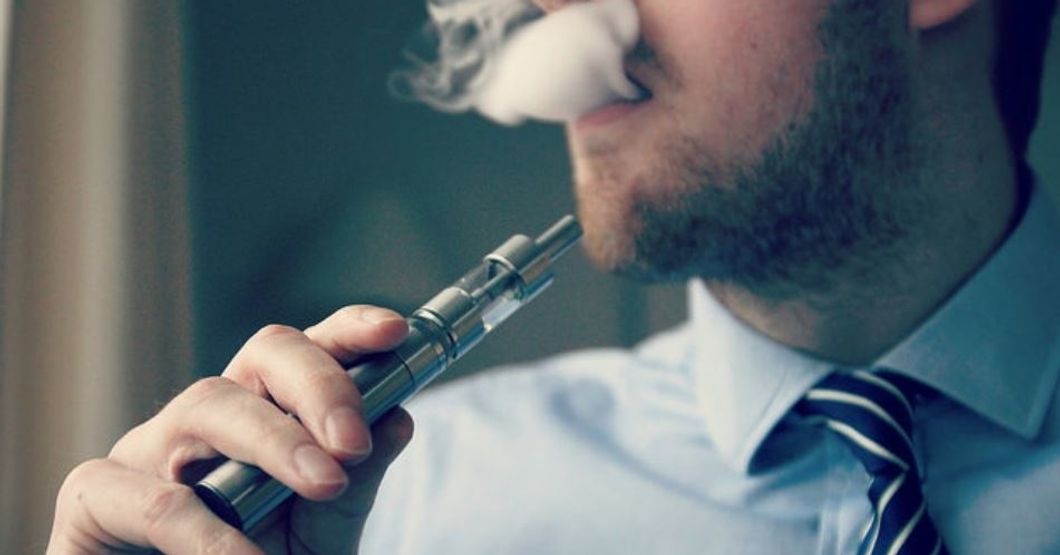Welcome back
Sign in to comment to your favorite stories, participate in your community and interact with your friends
or
LOG IN WITH FACEBOOKNo account? Create one
Politics
Hawaii Might Raise The Age To Buy Cigarettes To 100, And I'm 100% Here For It
This is the most symbolic legislation against smoking in all of American history, and there's no doubt that if it passes, it will create the momentum for other states to follow suit.
11 February 2019
263
Say aloha to cigarettes (meaning goodbye in this context). A bill has been proposed by state representative Democrat and doctor Richard Creagan where the age to buy cigarettes would be raised to 100 years old.
Each year beginning in 2020, the age would increase to 30 years, 40 years (2021), 50 years (2022), and 60 years (2023). Finally, in 2024, the purchasing age for cigarettes will be 100 years old.
Tobacco use is the leading cause of cancer and cause of death from cancer. The types are not just the expected lung cancer, however. It increases the chance of liver, stomach, colon, bladder, and cervical cancer (along with many, many more).
And the risk is still present even if you're not the one smoking. Second-hand smoke exposes you to chemicals that damage DNA, potentially leading to cancer.
An important note needs to be made, however. Notice that only cigarettes are included in this age restriction. Cigars, chewing tobacco (or "dip"), and e-cigarettes are not included. Dr. Creagan says that it's because he does not see these forms of tobacco as deeply harmful as cigarettes, although the National Cancer Institute cautions that all tobacco products can cause cancer and are harmful. Regular cigar smokers and cigarette smokers have similar levels of risk when it comes to cancer.
If this bill passes in Hawaii, this will essentially ban cigarettes in the state. This state was one of the leaders in raising the smoking age to 21, something that spread to others such as California, New Jersey, Massachusetts, Oregon, and Maine. And specific cities have also enforced this age restriction, such as New York, Chicago, Boston, San Antonio, Washington D.C., and many more, totaling 430 municipalities. Since 95% of adult smokers started smoking before the age of 21, this age is a logical place to start phasing it out of our culture.
This is the most symbolic legislation against smoking in all of American history, and there's no doubt that if it passes, it will create the momentum for other states to follow suit.
Keep Reading...Show less
Sports
To JUUL Or Not To JUUL? Before You Answer, Read This
Before you pick up a JUUL, think about if the risks are worth the hit.
25 November 2018
398
"JUULing" is the new fad among college students and teens. Although many JUUL users know that the small USB-looking vaping stick has risks, they don't understand the severity of the effects. In college, students pass around JUULs as if they're party favors and high school students are illegally obtaining the product. The level of addiction is so high that students can't even go an entire class period not taking a JUUL hit. I can't even believe the number of times I see people sneaking hits under library tables or smell somebody's fruit flavored vapor behind me in my lectures. The obsession is so high that I've even witnessed people dress up as JUULs for Halloween... talk about spooky.
What exactly causes JUULs to be so addictive? Well, a single JUUL pod contains 5% nicotine, which is equivalent to an entire pack of cigarettes. This is twice the amount of nicotine in regular e-cigarettes and has been proven to be as addictive as cocaine. For a product claiming to "improve the lives of the world's one billion adult smokers," the product, in reality, seems to do the opposite.
JUUL flavors go beyond just menthol and tobacco. With exotic flavors, such as mango, fruit medley, cucumber, creme brulee, and mint, children and teens are targetted with a product that seems harmless and flavorful. Not to mention that it is small and light, making it super easy to hide from a parent or teacher. JUUL's mission statement is failing, as the product causes an increase in the number of overall smokers and such a strong nicotine dependency that in the absence of a JUUL, the "gateway effect" takes place and smokers would ultimately resort to cigarettes.
What's even scarier about this device is how quickly it has dominated the tobacco and e-cigarette market. Since entering the mainstream retail marketplace in 2015, it has grown to reach 71% of market share, with sales rapidly climbing to nearly 800%. Yes, I said eight hundred. This doesn't even go into the black market sales of JUUL products to minors. 89% of minors who have attempted online transactions to purchase a JUUL have been successful, although it is more common for them to gain access through local retail stores or friends. With the sales of JUULs on sites like eBay and Craigslist, minors have the power to obtain the product at the tips of their fingers. JUUL also sends replacement JUULs to those who have previously purchased. I've heard of many people obtaining ownership of a JUUL by having their friends claim to lose their's online and be sent a new one for free.
Now I'm sure that you're wondering how these big scary numbers and the concept of nicotine addiction make "JUULing" so bad for you. Well, the truth is, the severe health risks that come along with using a JUUL go beyond just addiction and sale patterns. Most users are unaware of the long-term effects that they may face since the actual risks aren't presented to them. In case you haven't already figured out, JUULs contain nicotine, which is the only warning shown on the JUUL website. "WARNING: This product contains nicotine. Nicotine is an addictive chemical."
Well no sh**, Sherlock.
What about the long-term risks? What symptoms may a user experience? What risks can the other ingredients present? The packaging does not display feature warning labels about the health risks, as the product is not regulated by the U.S. Food And Drug Administration.
Penn State dove into the risks that users aren't aware of and found just how dangerous this tiny USB-sized nicotine device and other e-cigarettes can be. Their list of risks is pretty frightening. With that being said, if you're still thinking about vaping a JUUL, think about these things:
1. Besides nicotine, JUUL pods also contain an ingredient called formaldehyde. Formaldehyde is also used in building materials and household products, as well as disinfectants. This ingredient may cause cancer.
2. A single JUUL pod contains as much nicotine as an entire pack of cigarettes. Many users go through more than one pod in just one sitting.
3. By using this product, you could experience an increased heart rate and blood pressure, develop lung disease, chronic bronchitis, and insulin resistance, which could eventually result in type 2 diabetes.
4.60% of users are dual users. This means that they are using both JUULs/e-cigs in addition to conventional cigarettes. This is also dangerous because it urges many younger, non-tobacco smoking individuals to migrate to smoking cigarettes when they are unable to smoke from their JUUL.
If you're a college student, I'm sure you've noticed JUULs taking over your college campus. I'm sure you've smelled the various flavors when you're in the library trying to study or hear the panic of people who have lost their JUULs.
If you're a parent, you may have seen the device in your child's belongings, where I'm sure they argue that it's a USB for school, or you may have heard about JUULs from online resources warning parents about the dangers of the kid-luring nicotine vape.
If you're a JUUL user, you may have gotten started in attempts to quit smoking, or maybe it was passed to you at a party where you assumed it would just be a one-time hit.
No matter what stance you take on "JUULing," the FDA has started to discover the severity of the dangers that JUULs bring to those who choose to use (or not to use). In response to the epidemic, they have placed a partial ban on the selling of certain flavors in stores, excluding the flavors of menthol, mint, and tobacco. Although this is a start in dissembling the JUUL nation that we live in, it's not enough.
Educate yourself. Be aware of what you're doing to do your body before you actually do it. Recognize the effects that this product has on the lives of children and teens. The product itself isn't going to present the risks to you, but it doesn't mean that those risks are invisible. Whether you decide to do your research or not, the ultimate decision is still up to you. To JUUL or not to JUUL?
Keep Reading...Show less
Subscribe to Our Newsletter
Health and Wellness
Are E-Cigarettes Really As Safe As We Think?
The "healthy alternative" to cigarettes may not be as healthy as we thought.
24 August 2018
215
When the first e-cigarette hit the market in 2003, smokers quickly fell in love. Rather than inhaling tobacco, smokers could easily avoid the carcinogen and instead smoke flavored liquids with nicotine added. By doing this, smokers and chewers could get their nicotine fix with what the public assumed held little to no risk. While most researchers agree that e-cigarettes are most likely less dangerous than using tobacco products, new research has come out pointing to a number of unexpected problems.
One of the most recent studies on the effects of e-cigarettes is also one of the most concerning, especially for the immunocompromised: the use of e-cigarettes can damage the cells of the immune system. Using a technique that mimics the use of e-cigarettes, otherwise known as vaping, researchers were able to determine that non-vapers' alveolar macrophages grew inflamed after exposure, along with impairing their ability to function properly. These alveolar macrophages aid in filtering out and eliminating any foreign debris, such as dust or bacteria. Without properly functioning alveolar macrophages, users of e-cigarettes may be more prone to conditions such as microbial invasions of the lower airway.
Lung damage isn't the only major body part e-cigarette users need to watch out for; within the past year, some troubling studies have been released tying vaping to cardiovascular disease, heart disease, heart attacks, strokes, and even cancer. When used alone the risk of heart attack in users doubled, but when used in conjunction with cigarettes the risk grew to five times greater than the average person; additionally, some of the flavorings used in e-juice lower the levels of nitric oxide in the blood and boost inflammation, both of which are precursors to cardiovascular disease, heart attacks, and strokes. As if that wasn't enough, researchers from the Department of Environmental Medicine at the New York University School of Medicine have found that the use of e-cigarettes may contribute to lung and bladder cancer by increasing the likelihood of cellular mutation and significantly decreasing DNA repair activity.
One of the larger problems that many people have is that e-cigarettes still tend to use nicotine, an addictive derivative of plants such as tobacco. While the effects of nicotine may be pleasurable and calming, e-cigarette users still run the same risk that tobacco users do: not only is it incredibly hard to stop using, but studies show that those who use nicotine are also more likely to become addicted to other substances. Sometimes called a gateway drug, research spanning over 40 years agrees that nicotine is most definitely unsafe—and therefore adds some additional risks to the use of e-cigarette usage.
Despite these potential health complications, researchers do agree that e-cigarettes are still safer than the ordinary cigarette. With no tobacco and a lower concentration of the potentially hazardous chemicals found in cigarettes, those in need of nicotine run a far lower risk of health complications by switching over to e-cigarettes.
Regardless, e-cigarettes are not the safe and harmless alternative to cigarettes like many groups claim. While they may work well for some, people must be made aware of the potential health risks before starting. Though they're the healthier option for cigarette users, they're still far from healthy for the average person.
Keep Reading...Show less



























